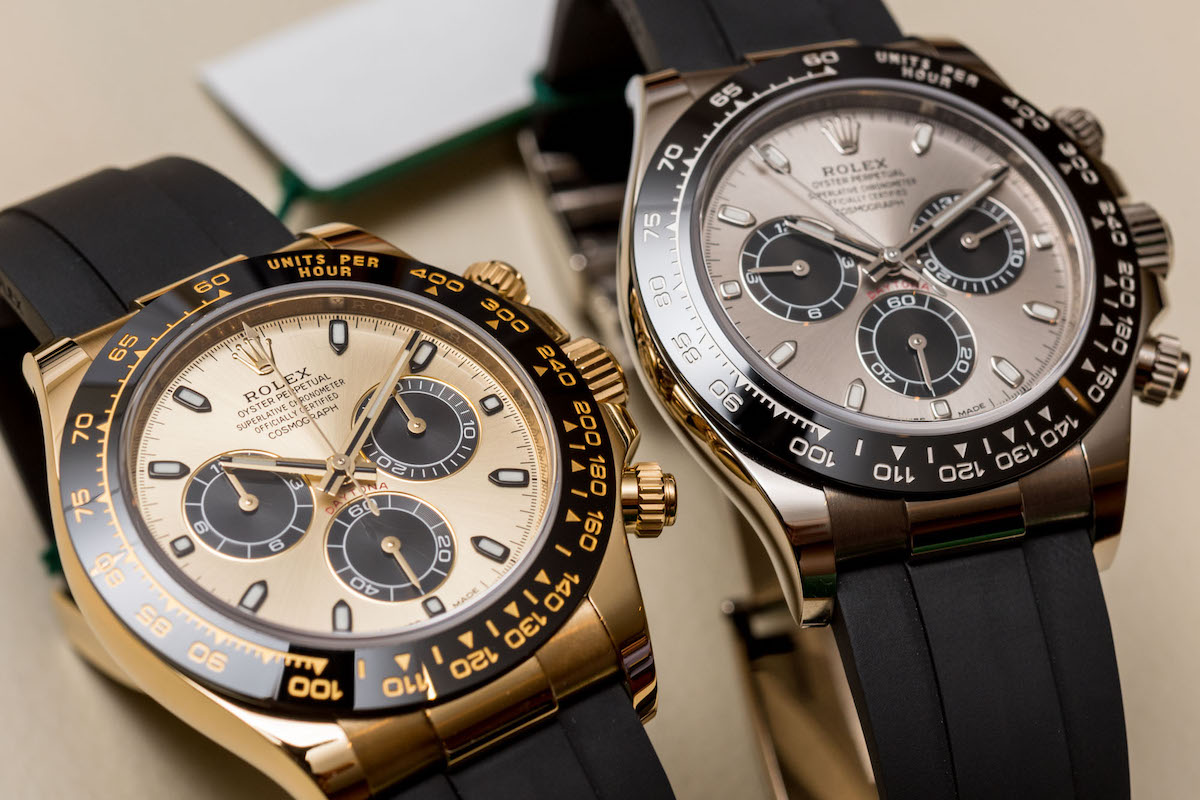While investing in luxury watches can be a potentially lucrative endeavour, it can be a nightmare navigating the aftermarket, both as a buyer and a seller.
What brands are a safe investment? Where should I be buying/selling? How do I make sure I’m not ripping myself off? Will my bank give me a loan so I can flip this Richard Mille?
DMARGE spoke exclusively with Carol Altieri, the owner and COO of Bob’s Watches, one of the world’s largest and most respected online watch exchanges, to gain an expert’s insight. With decades of timepiece trading experience under her belt, Altieri knows a thing or two about selling watches – and revealed one strange quirk that, in some instances, can help watch sellers demand thousands extra for their pieces.
That trick? Putting your watch on a rubber strap.
Curated news for men,
delivered to your inbox.
Join the DMARGE newsletter — Be the first to receive the latest news and exclusive stories on style, travel, luxury, cars, and watches. Straight to your inbox.
Altieri puts it like this: “if you take a Rolex Daytona on a leather strap and you put it on a rubber strap, we’re seeing [a] $3,000 difference for the rubber strap over the leather strap… they want that Oysterflex.”
Now when it comes to high-end watches, you can usually expect to pay more to get your watch on a rubber strap rather than a leather strap, although there usually isn’t a huge difference. Consider the price difference between these three otherwise identical OMEGA Seamaster Aqua Terras: the leather strap will set you back 8,250 AUD, the rubber strap 8,425 AUD (a $175 difference) and the steel bracelet 8,750 AUD.
$175 isn’t a small figure by any means, but a $3,000 gulf between leather and rubber? That’s just extraordinary.

The Daytona example must come with a grain of salt, however. The price differential might be simply because any leather strap on a Daytona is likely to be an aftermarket strap. While they have done so in the past, Rolex currently don’t offer a Daytona on a leather strap from the factory (indeed, Rolex very rarely offer leather straps on any of their watches, with the Daytona a notable exception). So maybe the huge price differential is more down to perceived ‘purity’ as opposed to up-and-down desirability.
It perhaps also speaks to the technical superiority of Rolex’s proprietary rubber strap, the so-called ‘Oysterflex’ bracelet. First introduced in 2017, Oysterflex bracelets are effectively a hybrid strap, with metal inserts reinforcing the elastomer strap. These inserts not only make the strap more durable but more comfortable, as they shape the strap to the wearer’s wrist. Where a typical rubber strap might be considered a technical and aesthetic ‘downgrade’ over leather, an Oysterflex strap could be considered an ‘upgrade’; the more premium option.
Indeed, if one browses Chrono24 for the Aqua Terra we mentioned earlier, you’ll see that the bracelet material has far less impact on the price than one might imagine. That’s potentially a good sign when it comes to steel vs. rubber, but weakens the leather vs. rubber price argument, at least when we consider this particular watch.A more tantalising prospect is when you consider two identical watches, both with aftermarket straps. When it comes to finding an aftermarket strap for your watch, rubber is almost always cheaper than leather – but if rubber commands a higher price when you go to sell it, it’s a no-brainer: spend less money to make more money. That’s the argument, at least.

Altieri offers an alternate suggestion for why she thinks she’s making more of a margin on rubber-strapped watches over leather-strapped ones: pandemic. Because we’re all working from home and dressing more casually, people are eschewing formal leather straps in favour of more casual; more comfortable rubber straps.
“I think everybody’s kind of dialed it back a little bit. It’s all about comfort, and nothing flashy. You’re not seeing women in high heels, either.”
It’s a good point. Part of the reason many luxury watch brands don’t offer rubber straps – indeed, it took Rolex until 2017 to start offering a rubber option – is because they’re perceived as less formal than leather or metal. But if you’re not in the office you don’t need to be so concerned about formality… And most people consider rubber straps to be more comfortable than leather, and especially more comfortable than metal.
Moreover, sports watches have become far more acceptable in formal settings over the last few decades, with the emergence of luxury sports watches like the Audemars Piguet Royal Oak or the Vacheron Constantin Overseas both emblematic of and fuelling this trend. This move towards rubber, then, is just a natural evolution or extension of the broader trend towards more and more casual or sporty watches we’ve seen in the late 20th and 21st centuries.
With The Bat Kiss still a grim reality for most of us as we roll into 2021 – and the need to make savvy money moves stronger than ever – putting that Panerai you’ve been trying to sell on a rubber strap might just be the key to success.

